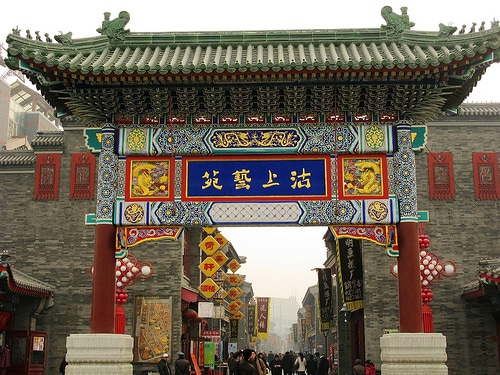I travelled to Tianjin for a day trip recently with my girlfriend to eat some seafood and do some sightseeing along the coast. What I saw was something distinctly missing from Beijing – the old colonial beauty that is now the centerpiece of Tianjin’s landscape.
First up was the Five Great Avenues (五大道), a former colonial stronghold full of stately manors and quaint streets. When we walked off the main road after getting off the crowded bus, we were immediately struck by the grandeur of it all – the nice gardens that sat on generous blocks of land, the bright and well kept facade of the residences. Tourists like ourselves rode around in rickshaws with strawberry red and white striped shades. We stumbled on a park not unlike lawns in Europe, surrounded by silky willows. In the middle was a long rectangular flower bed full of multi-coloured potted flowers. Here was a park one could stride through on a balmy night, a hideout from the usual crowds.
The Italian district along the banks of the river flowing through the city provided similar feelings of other worldliness, especially the sexually-charged bronze statue of a man caressing a woman that decorated the esplanade walkway. I guess this takes the “harmonious society” (和諧) message widespread across the country to a whole new level.
Later that day we visited Binhai, the new development area on the eastern coast an half hour train away from Tianjin. The city was full of traffic and people, and immediately brought us back into the developing-China we had become used to. There was also a dusty walkway along the water with great buildings half built across the river – a Bund-like Puxi-Pudong feel of Shanghai.
I can’t help but feel a twinge of nostalgia, even if it is of an imaginary past.


